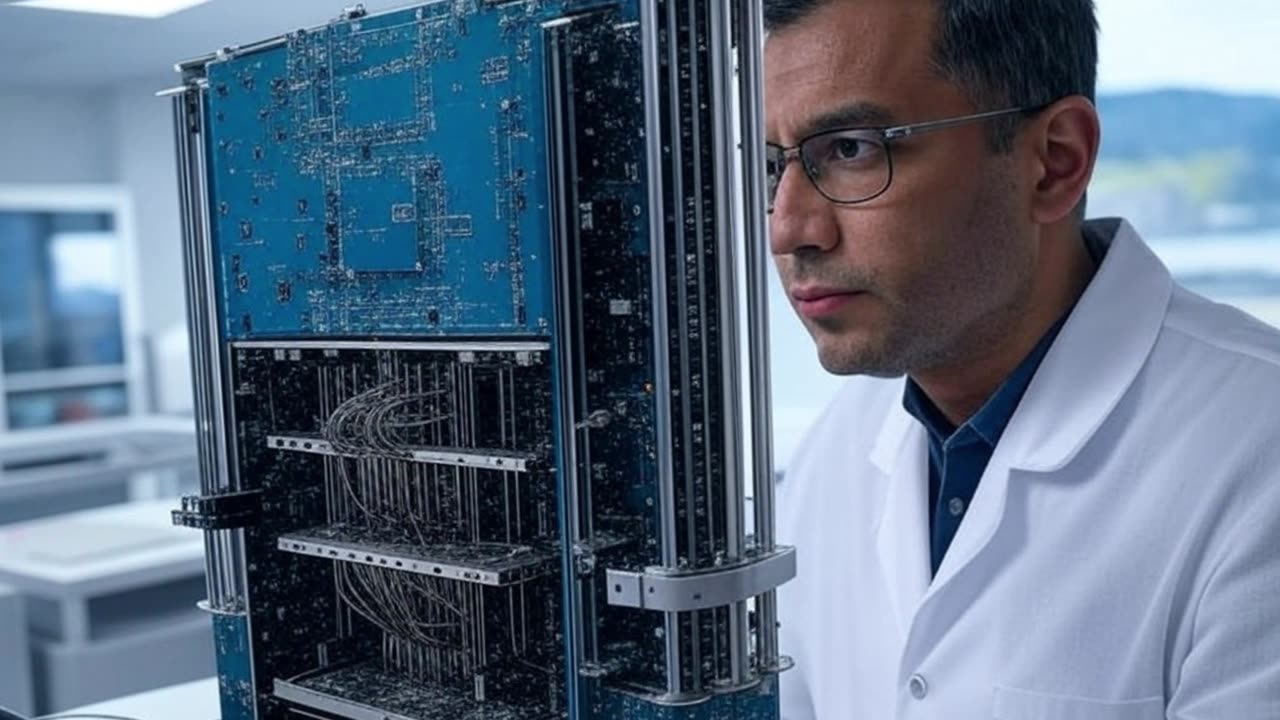Premium Only Content

Willow Processor: Google's Breakthrough in Quantum Error Correction
Willow Processor: Google's Breakthrough in Quantum Error Correction
We create a news channel fully dedicated to the fastest information from the world. Your news on every topic and without secrets. We deal with politics, but also science, entertainment and the world of Stars. If you are looking for information about politicians you have come to the right place. If you are looking for mysteries, secrets and curiosities about celebrities and politicians, it's good that you are here.
Google's quantum computing team has achieved a significant breakthrough in error correction, a critical hurdle in developing practical quantum computers. Their new quantum processor, Willow, has demonstrated the ability to exponentially suppress errors as the size of the quantum computer increases. This addresses a fundamental challenge in quantum computing, where the environment's inherent "noise" at the quantum level disrupts the delicate calculations.
Quantum Noise and Error Correction
Quantum computers are extremely sensitive to their environment. Even in the quietest spaces, quantum noise, caused by the movement of electrons and other atomic effects, interferes with computations. Quantum error correction (QEC) techniques are essential to protect the fragile quantum information from this noise.
Google's Breakthrough with Willow
Google's research, published in Nature, shows that errors can be suppressed exponentially as the size of a quantum computer increases. This is a crucial step because, while increasing the size of the system improves error correction, it also introduces more errors. The tipping point, where error correction outpaces error creation, is when scaling up becomes beneficial.
Willow, an upgrade from Google's previous Sycamore processor, achieved this milestone. It features 105 qubits, the quantum equivalent of classical bits. Researchers combined multiple physical qubits to form a "logical qubit," which lasted significantly longer and had a much lower error rate than individual qubits. Willow improves upon Sycamore by having more qubits, better qubit quality (longer lasting and less error-prone), and improved fabrication processes.
Significance and Limitations
This achievement is considered a major advancement in the field. Experts have praised the research for its rigor and significance, with some calling it one of the most important results in experimental quantum information in recent years.
However, practical applications remain distant. Current quantum computers are still far from the hundreds of logical qubits and extremely low error rates needed for complex tasks like robust chemical simulations. There is agreement in the research community that quantum error correction has seen a breakthrough, although the technology is not yet at the point of being useful.
Comparison with Other Efforts
Google is not alone in pursuing error correction. Microsoft and Quantinuum have also reported progress using a different qubit technology.
Types of Errors
Two main types of errors affect quantum computers: bit flips (similar to classical computer errors) and dephasing (loss of the quantum state). Quantum error correction, unlike classical methods, cannot rely on simple redundancy due to the laws of quantum mechanics. Instead, it spreads information across a logical qubit to protect it.
Future Outlook
While the hype surrounding quantum computing has sometimes been excessive, this breakthrough is a genuine and significant step forward. It highlights the rapid progress in quantum error correction and brings us closer to the era of fault-tolerant quantum computers.
-
 1:05
1:05
SUPERTOPNEWS
4 days agoFormer Napoli Coach Criticizes Club's Handling of Zielinski's Transfer to Inter Milan
121 -
 9:49
9:49
Tundra Tactical
10 hours ago $17.39 earnedThe Best Tundra Clips from 2024 Part 1.
98.3K8 -
 1:05:19
1:05:19
Sarah Westall
10 hours agoDying to Be Thin: Ozempic & Obesity, Shedding Massive Weight Safely Using GLP-1 Receptors, Dr. Kazer
85.2K21 -
 54:38
54:38
LFA TV
1 day agoThe Resistance Is Gone | Trumpet Daily 12.26.24 7PM EST
62K11 -
 58:14
58:14
theDaily302
19 hours agoThe Daily 302- Tim Ballard
60.8K10 -
 13:22
13:22
Stephen Gardner
13 hours ago🔥You'll NEVER Believe what Trump wants NOW!!
109K300 -
 54:56
54:56
Digital Social Hour
1 day ago $11.17 earnedDOGE, Deep State, Drones & Charlie Kirk | Donald Trump Jr.
61.5K5 -
 DVR
DVR
The Trish Regan Show
14 hours agoTrump‘s FCC Targets Disney CEO Bob Iger Over ABC News Alleged Misconduct
66.1K39 -
 1:48:19
1:48:19
The Quartering
15 hours agoElon Calls White People Dumb, Vivek Calls American's Lazy & Why Modern Christmas Movies Suck!
147K112 -
 2:08:42
2:08:42
The Dilley Show
16 hours ago $37.19 earnedH1B Visa Debate, Culture and More! w/Author Brenden Dilley 12/26/2024
126K42